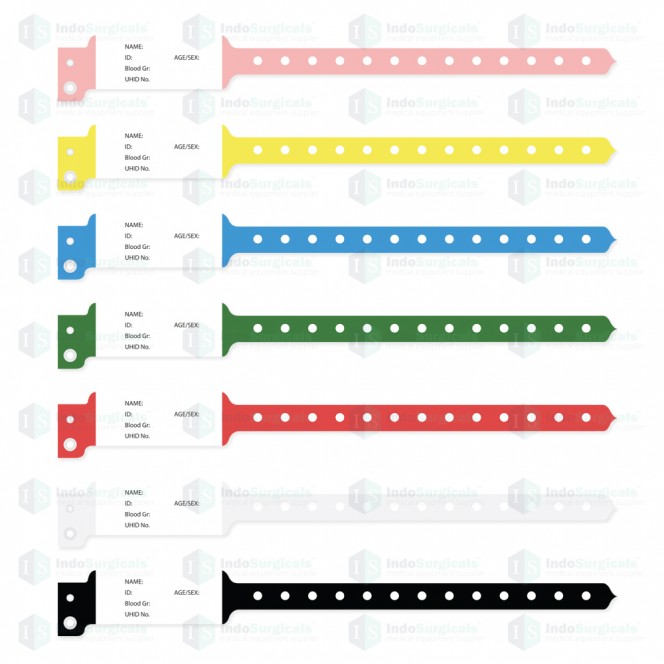How a Patient Identification Band Can Help Prevent Identity Mix-ups in Healthcare Settings
How a Patient Identification Band Can Help Prevent Identity Mix-ups in Healthcare Settings
Blog Article
Exactly How Patient Identification Band Plays an Essential Role in Patient Management and Treatment
Patient Identification bands offer as a crucial cog in the intricate machinery of medical care systems, functioning as a guard against medical mistakes. As the frontline device for validating Patient identification, these bands underpin vital procedures from administering the right medicine to ensuring the best individual undertakes the designated procedure. The profound effect of such a seemingly easy tool on Patient safety, experience and end results could surprise many, leaving one to ponder the prospective advancements and developments that could better enhance their efficiency.

Understanding the Fundamentals of Patient Identification Bands
In spite of the simpleness of their appearance, Patient Identification bands serve an essential duty in health care setups. These easy wristbands, often made from plastic or paper, hold a wide range of information vital for Patient administration and treatment. They commonly show the Patient's complete name, date of birth, and an one-of-a-kind Identification number, working as the main resource of Patient Identification. The bands might also show details such as allergies or special care directions, giving healthcare experts with immediate accessibility to essential info. Using these Identification bands is considered an universal protocol in healthcare, intended at ensuring Patient security and precision of treatment delivery. The efficiency of Patient Identification bands depends heavily on constant use and precise info input.
The Duty of Patient Identification Bands in Reducing Clinical Errors
An incredible number of clinical mistakes occur due to Patient misidentification, underscoring the indispensable duty of Patient Identification bands. These bands, often outfitted with barcodes or QR codes, contain necessary Patient info such as name, age, and clinical history. In high-stress environments where clinical employees handle countless responsibilities, Patient Identification bands offer as a trusted and fast referral.
Enhancing Patient Safety With Identification Bands

The Influence of Patient Identification Bands on Patient Experience
Nearly all individuals in healthcare setups experience the usage of Identification bands during their care journey. These bands, usually put on around the wrist, have a profound impact on the Patient experience. They offer as a constant, visible reminder of the Patient's identification and clinical conditions, guaranteeing clients that they are identified and cared for.
Future Advancements and Innovations in Patient Identification Bands Innovation
While current Patient Identification bands have confirmed efficient in improving treatment, the horizon of technological improvements promises also greater improvements. Arising technologies, such as radio-frequency Identification (RFID) and Quick Reaction (QR) codes, supply a brand-new level of accuracy and effectiveness. RFID tags can offer real-time Patient area monitoring, while QR codes can save thorough Patient details obtainable using smart device scanning. Combination of man-made knowledge can allow automatic Patient information analysis, forecasting prospective health dangers and improving therapy plans. Biocompatible my review here products are likewise being checked out to raise Patient convenience. These improvements not only strengthen Patient safety however also enhance health care procedures. Hence, future advancements in Patient Identification bands hold significant potential in revolutionizing Patient treatment.
Final thought
Patient Identification bands are a vital asset in medical care, guaranteeing precise Patient Identification and minimizing medical errors. These tools enhance Patient safety and security, boost self-confidence in health care systems, and enhance Patient experiences and end results. With the potential for Clicking Here future innovations in Identification band innovation, their function in Patient management and treatment is readied to come to be a lot more crucial, reinforcing their significance in the distribution of secure and efficient medical care.
Exactly How Patient Identification Band Plays a Crucial useful content Duty in Patient Management and Care
A staggering number of medical mistakes happen due to Patient misidentification, highlighting the indispensable function of Patient Identification bands. patient identification band.Undoubtedly, the usage of Patient Identification bands considerably enhances Patient safety and security in healthcare setups. Hence, future innovations in Patient Identification bands hold considerable potential in reinventing Patient treatment
Patient Identification bands are an essential property in healthcare, guaranteeing exact Patient Identification and decreasing medical mistakes.
Report this page